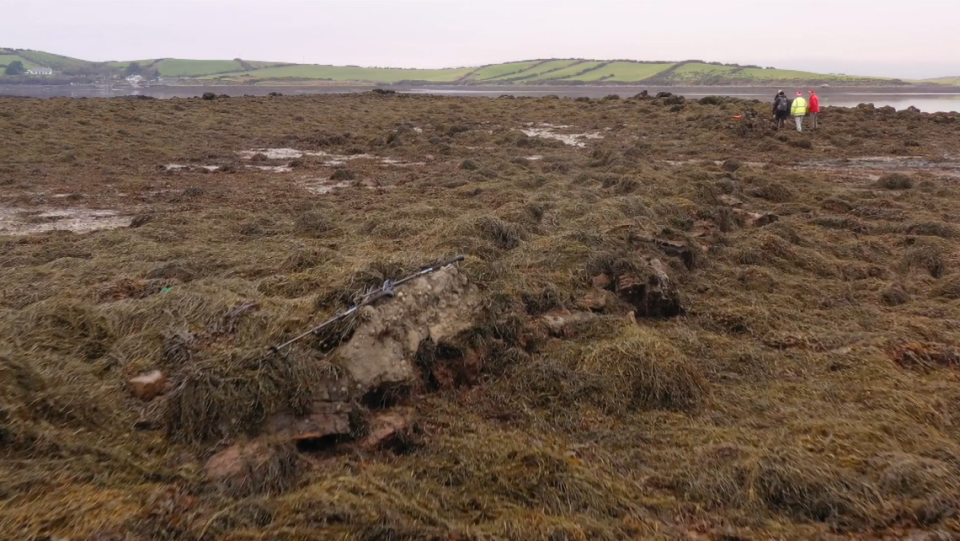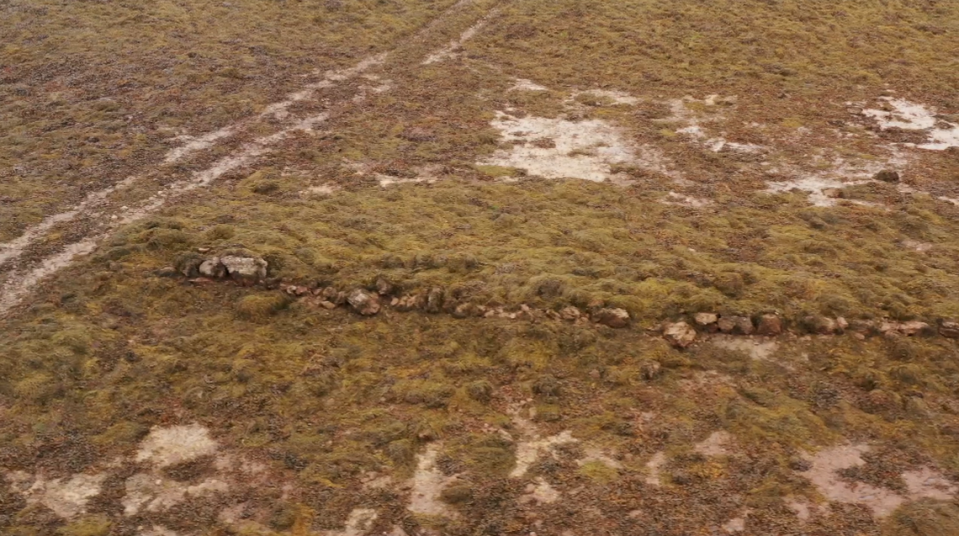High tide and seaweed hid 3,000-year-old fortress in Ireland — until now. See it
The ruins of an ancient fortress were recently discovered on a small island along the west coast of Ireland.
Stone ramparts dating to the late Bronze Age were found stretching across a causeway connecting mainland Ireland to Collanmore Island, located in Clew Bay.
“It’s a fascinating site,” Michael Gibbons, an independent archaeologist who made the discovery, told McClatchy News.
Uncover more archaeological finds
What are we learning about the past? Here are three of our most eye-catching archaeology stories from the past week.
→ Roman helmet looked like a 'rusty bucket' when it was found in UK. Now, it's restored
→Elaborate 600-year-old castle — complete with moat — unearthed in France. Take a look
→ Mysterious wooden train car — almost 100 years old — unearthed in Belgium, photos show
Discovering the ramparts
The ancient ruins went undocumented for years, largely because they’re usually submerged under the sea.
Only about once a month, at low tide, is the entire structure visible, Gibbons said. And even then, it’s been obscured underneath layers of seaweed — a cash crop harvested by locals.
But, in early 2024, Gibbons was granted permission to clear the seaweed, revealing two parallel ramparts, each spanning more than 600 feet in length, and one faced with large limestone blocks.

Both structures have been heavily eroded due to rising sea levels and now only stand several feet high.
But when they were constructed — likely around 1000 B.C. — they would have been formidable defensive structures capable of controlling access to and from the island, Gibbons said.
Much else about the site remains unknown, Gibbons said, adding “We’re really at the beginning of any sort of research on it.”
However, numerous Bronze Age hill forts have been found throughout the country, which could provide valuable context for the newly discovered ruins.

Irish Hill Forts
More than 100 Late Bronze Age hill forts of various sizes have been discovered in Ireland, including on mountaintops, near lakes and on the coastline, Gibbons said, adding “I’ve found lots of them.”
In addition to their outer walls, some of these forts contained large stone houses, which could measure 26 feet wide. Some also contained ramparts with their own chambers, gates with defensive features and staggered entrances.
Most of them appear to have been built during an “intensive episode” of construction that lasted about 200 years.
“These were major tribal centers in their own day in a world with warring tribal kingdoms left right and center,” Gibbons said.
While these forts certainly kept enemies at bay, they likely also served ceremonial purposes, Gibbons said.
As Ireland moved into the Middle Ages, many of the larger Bronze Age forts were handed over to churches.
“Gaelic lords who spent their time killing each other…now want(ed) to get into heaven,” Gibbons said.
Later on, in the 12th and 13th centuries, when the English appeared in Ireland, they took over control over some of the forts, making their own additions.
“So sometimes you’ll have this palimpsest of conquest and control,” Gibbons said. “You can have multiple structures on one site.”
Today, many of these structures survive thanks, in part, to an old Irish belief that ruins are inhabited by spirits.
In western Ireland, in particular, “there was a reluctance to damage anything that had a hint of antiquity, because the belief in the spirit world was very alive in Gaelic culture,” Gibbons said.
Additional research, including infrared imaging, will be conducted at the site, Gibbons said. So far, no other large stone structures have been found, but the traces of abandoned villages have been located nearby.
Several underground bunkers — left from WWII — unearthed at park in Belgium. See them
2,800-year-old ‘recycling bin’ discovered in ruins of ‘Britain’s Pompeii,’ photos show
Prehistoric workshops — with axes and other stone artifacts — found in Egypt. See them

